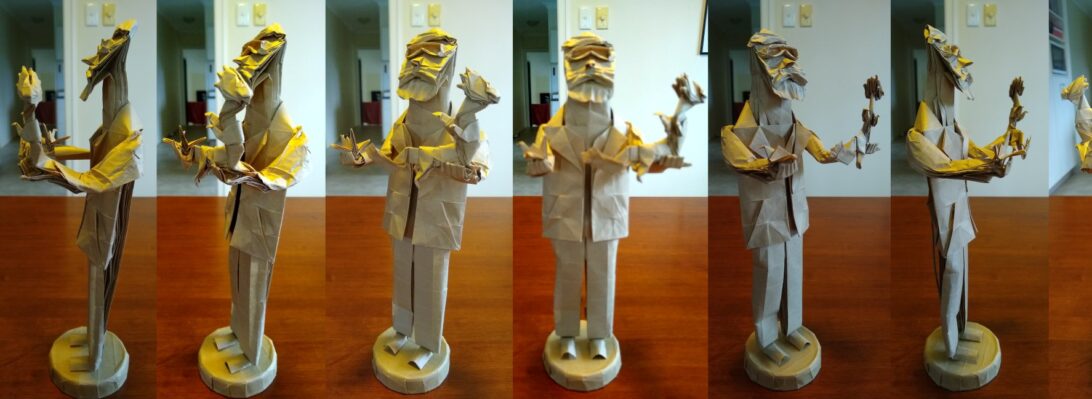Whilst being eliminated from the Origami Tournament, I am still interested in the models being folded by surviving contestants. This week’s challenge was Jang Yong Ik’s :Smilodon” – a “sabre tooth tiger” like critter from time gone past:

The fold sequence is intense – this model ate up a 70cm square of black/natural duo Kraft paper like few other models. The body is thick and heavy, some sections had dozens of layers.

I took my time, considered as I went, determined to succeed on my first fold. In retrospect, using thinner paper would have an advantage in that the layer management would be easier, but the legs would be flimsy and require wire supports – tough for a designer to distribute paper structurally.

In the end, we have a crouching toothy fossil, it was an interesting exercise and entrants did some good shaping to personalise their folds. I enjoyed exploring the sequence.






